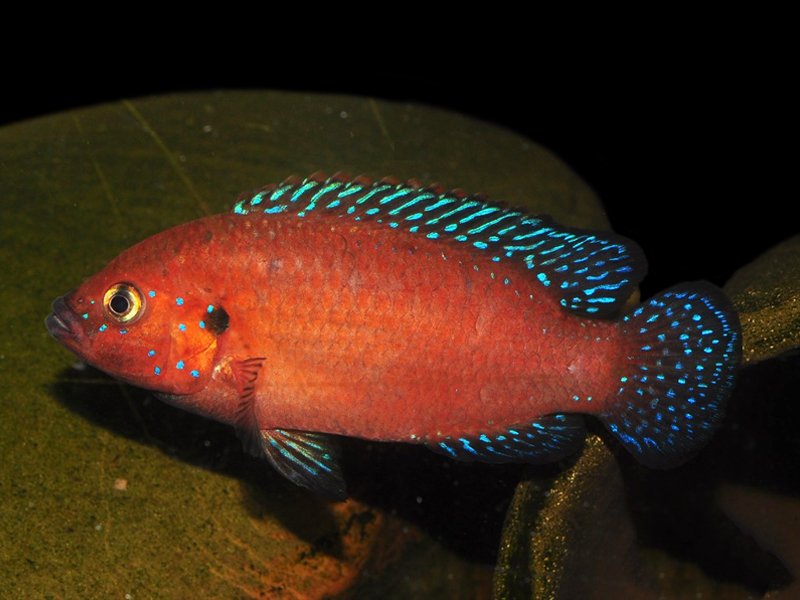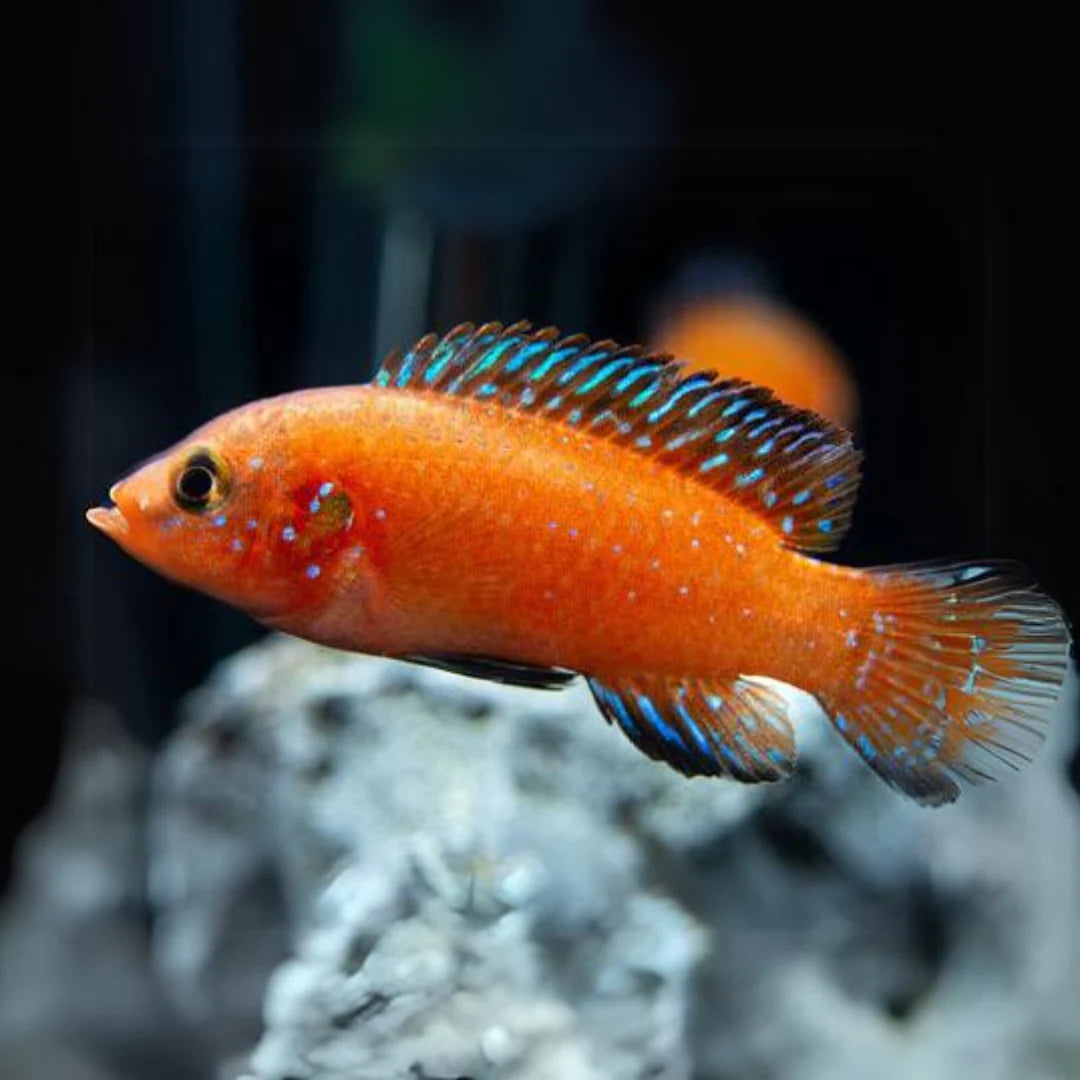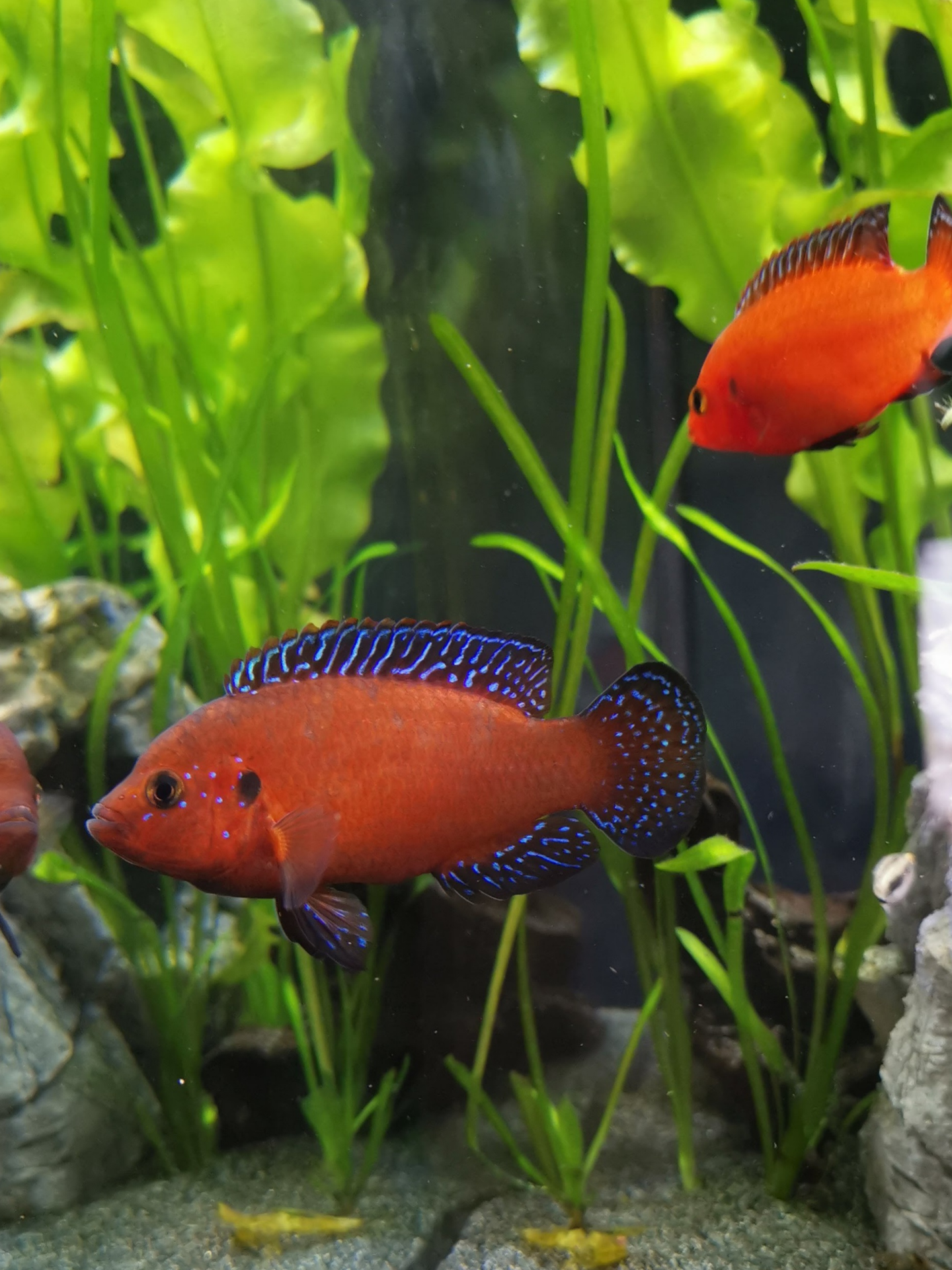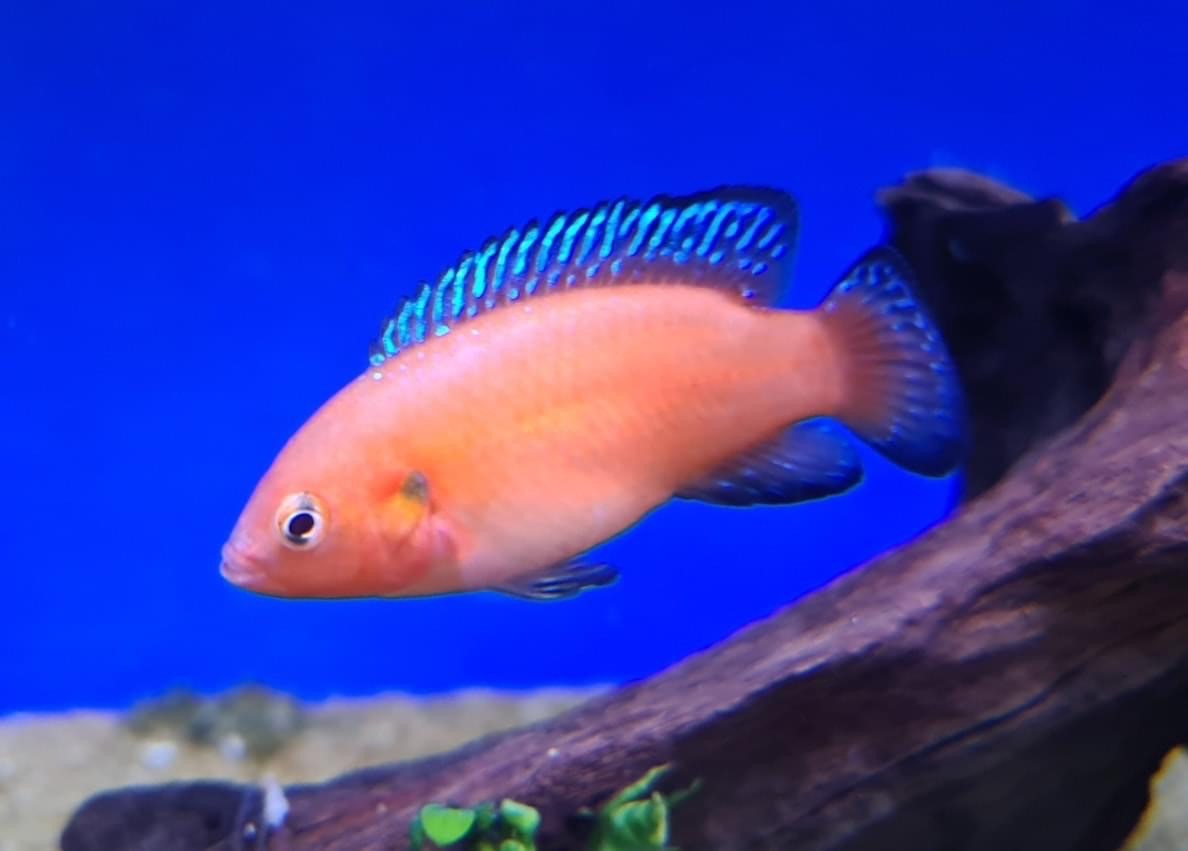Turkana Jewel Cichlid (Hemichromis exsul) - Live Fish
Turkana Jewel Cichlid (Hemichromis exsul) - Live Fish
Total items
Product subtotal
Detailed Description
Detailed Description
The Turkana Jewel Cichlid (Hemichromis exsul) is a striking and colorful freshwater fish that belongs to the family Cichlidae. Native to East Africa, it is known for its vibrant coloration and dynamic behavior, making it a popular choice for aquarists who appreciate a bold, beautiful species with a bit of personality. Here's more detailed information about the Turkana Jewel Cichlid:
General Information:
- Scientific Name: Hemichromis exsul
- Common Names: Turkana Jewel Cichlid, Turkana Cichlid
- Size: Small - 1"-1.5"; Medium - 1.75"-2". Typically grows to around 6 to 7 inches (15 to 18 cm) in length.
- Origin: Native to the Lake Turkana region in northern Kenya and parts of southern Ethiopia. It is found in rocky, clear waters with moderate to slow-moving currents.
Appearance:
- Coloration: The Turkana Jewel Cichlid is known for its stunning colors, especially the males, which are particularly vivid. These fish display bright shades of red, orange, and blue-green, particularly on their flanks and fins. Their coloration intensifies during breeding periods, with males displaying even brighter colors to attract females.
- Body Shape: The body of the Turkana Jewel Cichlid is elongated, with a slightly laterally compressed shape. The fish has a prominent, rounded head and large, expressive eyes that add to its appeal.
- Fins: The dorsal fin is long and pointed, often displaying red or orange hues, while the tail fin may have a slightly forked shape with red or blue highlights.
- Eyes: One of the notable features of this species is its vibrant red eyes, which complement the fish's overall colorful appearance.
Behavior and Temperament:
- Temperament: The Turkana Jewel Cichlid is known for its territorial and sometimes aggressive nature. Like many cichlids, it can be protective of its space, especially during breeding. Males are more territorial and may become more aggressive toward other males or fish that invade their territory.
- Activity Level: These fish are relatively active, often swimming around rocks and plants in their environment. When they feel secure, they may engage in interesting displays of color and behavior, particularly during mating rituals.
- Tankmates: Given their territorial nature, it's important to choose tankmates wisely. The Turkana Jewel Cichlid can be kept with other robust and similarly sized fish, but it may not be suitable for peaceful community tanks. Best tankmates are other cichlids or larger fish that won't be easily bullied or stressed by the Jewel Cichlid’s behavior. Avoid keeping them with smaller fish that could be seen as prey or easily stressed by the cichlid's aggressive tendencies.
Care and Maintenance:
- Tank Size: A minimum of a 30-gallon tank is recommended for a single Turkana Jewel Cichlid, though larger tanks are preferred, especially if housing multiple fish. This will allow enough space for territorial behavior and to accommodate other tankmates.
-
Water Conditions:
- Temperature: 75°F to 82°F (24°C to 28°C).
- pH: Slightly alkaline water, between 7.5 to 8.5 pH.
- Hardness: Moderate to hard water (10-20 dGH).
- Water Movement: They are found in areas with moderate to slow-moving water in the wild, so they prefer a tank with gentle filtration and minimal current.
- Diet: The Turkana Jewel Cichlid is carnivorous and will thrive on a varied diet. It can be fed high-quality cichlid pellets, live or frozen foods like brine shrimp, bloodworms, and daphnia. They may also accept occasional vegetable matter, though animal-based food should be the bulk of their diet.
- Tank Setup: They enjoy a well-decorated tank with rocks, caves, and structures where they can establish territory. Planting is not always necessary, as they can uproot plants or disturb them during their territorial displays.
Breeding:
- Breeding Conditions: The Turkana Jewel Cichlid is known to be an egg-layer that spawns on a flat surface, often rocks or other substrates in the tank. When they are ready to breed, the males will display vibrant colors to attract the females.
- Care of Eggs and Fry: The female lays eggs on a flat surface, and both parents usually take turns guarding them. Once the eggs hatch, the parents will care for the fry, guiding them to safety and protecting them from potential threats.
- Fry Care: The fry are relatively easy to raise compared to other cichlids, as they are protected by the parents. They should be fed fine food like baby brine shrimp or powdered cichlid food until they grow large enough to accept standard cichlid pellets.
Lifespan:
- The Turkana Jewel Cichlid has a lifespan of around 5-8 years when kept in proper conditions.
Popularity:
This species is valued in the aquarium hobby for its colorful and striking appearance. However, due to its territorial and somewhat aggressive nature, it is best suited for aquarists who are prepared to manage cichlid behavior and provide a suitable environment for this species.
Tank Setup:
- Substrate: A sandy or fine gravel substrate is ideal for the Turkana Jewel Cichlid, as it allows them to dig and establish territories.
- Decor: Rocks and caves are crucial for providing hiding spots and breeding areas. These fish will often rearrange the tank decorations, so secure the rocks to avoid accidents.
- Lighting: Moderate lighting is sufficient, though intense lighting can stress the fish. The tank should provide enough lighting to highlight the fish's colors without overwhelming them.
Notes:
- Due to their territorial and sometimes aggressive nature, the Turkana Jewel Cichlid should not be kept with smaller or timid fish. It thrives best in species-specific tanks or with other similarly sized cichlids.
- Regular water changes are essential to keep the water quality high and ensure the health of the fish.
In summary, the Turkana Jewel Cichlid is a beautiful and dynamic species that can make an excellent addition to the right tank. If you're prepared to provide the right environment and manage its territorial behavior, this cichlid can be a vibrant centerpiece in a larger aquarium.
PLEASE READ BEFORE YOU PURCHASE
- Do not place order if temperature in your area is below 40 degrees Fahrenheit.
- Proofread your delivery address at checkout. Orders with unknown addresses will be cancelled.
- Ships on Mondays and some Tuesdays Only. Our cut off times for orders for given week end on Monday at 12PM. If orders post after this time, they will be shipped the following week.
- Please use your tracking number to get status updates on your order.
- We do not accept returns. We will look to credit or refund accounts in this case.
- Local Pickup available, please send us an inquiry if interested in this option.
ARRIVE ALIVE GUARANTEE (have to receive shipment @1st delivery attempt to be eligible)
1. Must have somebody present at address to receive the 1st delivery attempt.
2. Please do not discard the deceased item without taking clear pictures first.
3. Take 2 pictures of unopened clear fish bag with deceased item still inside and email to us within 2 hours of 1st delivery. Upon sending pictures, you can discard the item. NO PICTURES = NO REFUNDS OR CREDITS, NO EXCEPTIONS.
SHIPPING/HANDLING:
- Orders are packed and shipped on Mondays and some Tuesdays.
- All orders are expedited shipping.
- The box being shipped is labeled "LIVE FISH" to avoid potential delays.
- Orders are packed with ice in the SUMMER season and heat packs in the WINTER season.
ACCLIMATION: (very important) - It is important to acclimate the fish due to water parameters being different.
FLOAT METHOD:
- Float the sealed bag in the aquarium for 15 minutes. This will allow the temperature in bag to gradually adjust to the aquarium temperature.
- Open the bag and roll down the top edge of bag to create an air pocket. This will allow the bag to float on the water's surface.
- Add a small amount of water (1-2 oz) from the aquarium into bag every 5 minutes for about 20 minutes; after 25 minutes, carefully net the fish and introduce into the aquarium.
- Goal here is to gradually introduce the fish to new water parameters with as minimal stress as possible.
- If still unsure with the acclimation process, please look up online for further instruction.
Product features
Product features
Materials and care
Materials and care
Merchandising tips
Merchandising tips
Share








